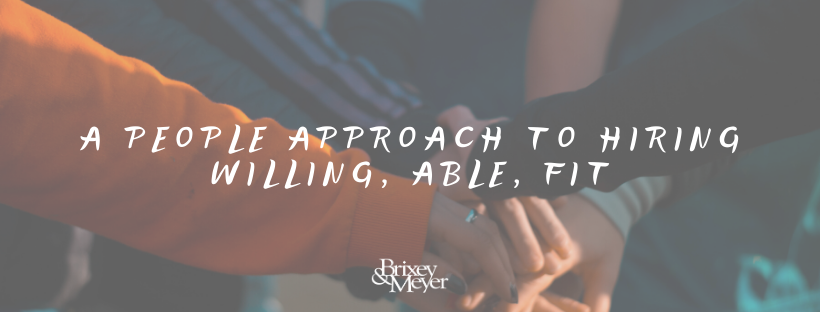- (Candidate) “I took another job because it has been six weeks since I had my first interview with your company.”
- (Hiring Manager) “Why didn’t anyone ask this new hire if he knew how to use Microsoft Excel? This is essential to do thing the job, and he just told me he has never heard of this application.”
- (Candidate) “I cannot accept this job even though we started the interview process four weeks ago because no one informed me of the salary range. The range is much too low for me to take.”
- (Candidate) “If your hiring process is any indication of what it is like to work at your organization, I will not be accepting the job. There has been little communication, a lack of respect for my time, and contradictory information shared.”
I dislike bureaucratic and shoddy hiring processes! Oftentimes, they lead to either losing superstar candidates or hiring sub-par performers! Not only do they lead to a mediocre organization but also damage an organization’s reputation. Stacy Pollack of Glassdoor shared that 55% of job seekers report avoiding certain companies after reading negative reviews (5 Ways You're Losing Good Candidates In The Recruitment Process). Guess who leaves many of those bad reviews? Yep. You guessed it. People, who went through a bad hiring process.
To avoid poor hiring outcomes, organizations must avoid two traps: (1) The “Under-structured” trap, or (2) The “Over-structured” trap. Both lead to poor hiring decisions. Both lead to damaged reputations. Both lead to missed opportunities.
The “Under-structured” Trap
It is easy to over-simplify the hiring process and simply walk into an interview without a plan. Such an approach fails to create a systematic method of gathering multiple vantage points and meaningful input. Poor structure and design lead to missing “red flags” and/or fails to uncover hidden issues. Having a “gut” feeling about a candidate can be a good thing, and it should not be ignored. However, in this approach, the “gut” feeling is readily accepted without verifying facts. How dangerous!
Dangers of the “Under-structured” Trap:
- Hiring someone, who is not qualified for the job
- Hiring someone, who is not excited about the job
- Hiring someone, who does not fit with the team or company culture
- Not hiring someone, who could grow into the role and excel
- Failing to document interviews and stay consistent between candidates. This can lead to potential legal pitfalls.
The “Over-structured” Trap
It is easy to over-complicate the hiring process. Needless extra steps, mounds of paperwork, and delayed actions create confusion. When this happens, candidates tire of the process and seek other opportunities. Candidates want clarity regarding how long the process will take. Candidates want knowledge of what will take place within the process. Candidates want communication during the process. The “Over-structured” approach requires candidates to fill out too much paperwork, complete too many assessments, and sit through too many interviews. Oftentimes, this is done with little communication to the candidate. Top candidates have options, and they are not willing to wait around without clear communication. In today’s job market, there are many available options for top candidates. Companies, who insist upon running through every step of their process without purpose and timeliness will miss out on these people.
Dangers of the “Over-structured” Trap:
- Failing to hire top talent due to moving too slow
- Frustration by operators due to missing out on candidates
- Candidates facing fatigue during the interview process leaving a bad taste in their mouth toward the company
A Better Approach
Many organization error one way or the other resulting in hiring sub-par performers. There is a better approach! Companies need a streamlined process and practice when it comes to interviewing. This should be robust enough to gauge candidate viability but nimble enough to move quickly.
Here are some tips in how to do this:
- Develop a framework—Where I work, we utilize a framework called “Willing, Able, Fit.” Our entire interview process boils down to determining whether the person wants to do the job, can do the job, and if they fit with our team and culture. All interview questions, assessments, and inquiries focus on finding out if the candidate is “Willing, Able, and Fit” for the job.
- Conduct multiple interviews with multiple interviewers—There needs to be healthy interviewer debate to determine the “true” candidate. One person cannot always see this as blinders may exist. By having multiple interviewers, different perspectives can be shared.
- Use valid and reliable assessment tools—Put bluntly, some assessment tools stink! When determining the type of assessment tool to use, consider what you want to learn. Some tools are great, but there may not be a good purpose for using them. The assessment tool should provide information related to how the person will perform on the job or fit within the culture.
- Have a point person, who communicates with the candidate and organizes the interview process—Having multiple people setup interviews creates confusion. When a candidate has a singular point of contact, the process moves smoother and quicker.
- Know when to move fast and when to move slow—When a company finds a great candidate, they should move quickly through the interview process so that they do not lose the candidate. At the same time, they should not skip key components of the process. That is why it is so important to have a process…just make sure it is one that allows for quick action!
I encourage you to treat hiring like other key organizational processes. Financial accuracy matters…operational excellence matters…people should matter just as much! To do this, it begins with hiring the best with a process that works!


